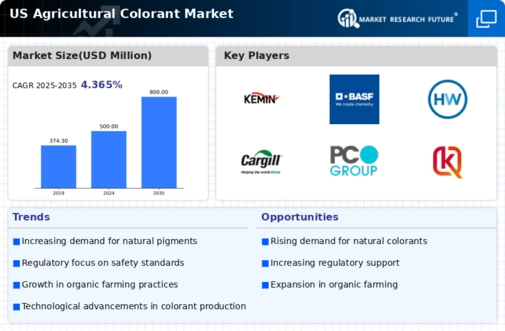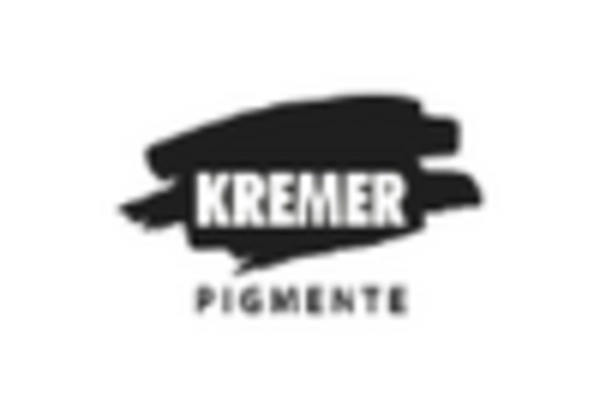Increased Focus on Food Safety
The agricultural colorant market is also driven by an increased focus on food safety and quality assurance. Regulatory bodies are imposing stricter guidelines regarding the use of colorants in food products, prompting manufacturers to ensure compliance with safety standards. This heightened scrutiny has led to a growing demand for colorants that are not only visually appealing but also safe for consumption. The agricultural colorant market is adapting to these changes by prioritizing the development of colorants that meet regulatory requirements while maintaining product integrity. As a result, manufacturers are investing in quality control measures and transparency in sourcing, which could enhance consumer trust and market growth.
Consumer Awareness and Education
Consumer awareness regarding the ingredients in food products is on the rise, significantly impacting the agricultural colorant market. As individuals become more informed about food additives, there is a growing demand for transparency in labeling and sourcing of colorants. This trend encourages manufacturers to provide clear information about the origins and safety of their colorants. The agricultural colorant market is responding by emphasizing the use of natural and safe colorants, which could potentially lead to increased market share among brands that prioritize consumer education. This shift not only fosters trust but also aligns with the broader movement towards healthier eating habits.
Rising Demand for Organic Produce
The agricultural colorant market experiences a notable surge in demand due to the increasing consumer preference for organic produce. As consumers become more health-conscious, they seek products that are free from synthetic additives. This trend is reflected in the market, where organic fruits and vegetables are gaining traction, leading to a projected growth rate of approximately 8% annually. Consequently, manufacturers are compelled to innovate and develop natural colorants that align with organic standards. This shift not only enhances the appeal of agricultural products but also supports sustainable farming practices. The agricultural colorant market is thus adapting to meet these evolving consumer expectations, ensuring that products are both visually appealing and compliant with organic certifications.
Expansion of Food Processing Sector
The agricultural colorant market is significantly influenced by the expansion of the food processing sector in the United States. As the food industry evolves, there is an increasing need for colorants that enhance the visual appeal of processed foods. The market for processed foods is projected to grow at a CAGR of around 5% over the next few years, driving demand for effective colorants. This growth prompts manufacturers to invest in research and development to create innovative color solutions that meet the aesthetic and regulatory requirements of food products. The agricultural colorant market is thus positioned to benefit from this expansion, as food processors seek to differentiate their products through vibrant and appealing colors.
Technological Innovations in Colorant Production
Technological advancements play a crucial role in shaping the agricultural colorant market. Innovations in extraction and formulation techniques enable the production of high-quality colorants that are both effective and sustainable. For instance, advancements in biotechnology have led to the development of colorants derived from natural sources, which are increasingly favored by consumers. The agricultural colorant market is likely to see a rise in the adoption of these technologies, as they not only improve product quality but also reduce environmental impact. This trend suggests a future where colorants are produced with greater efficiency and sustainability, aligning with the broader goals of the agricultural sector.
















